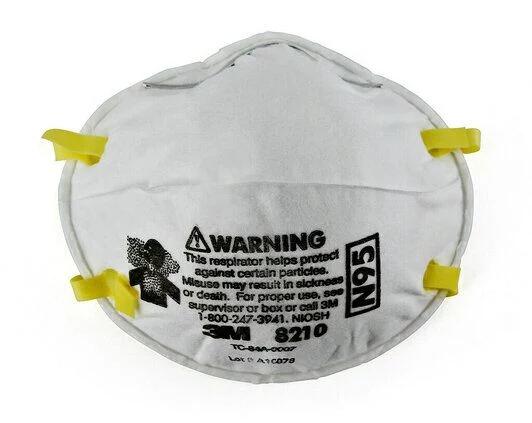Most N95 Mask Reprocessing Methods Effective at Decontamination
While most methods of sterilization are effective, efficacy can vary depending on the design of particular masks.

A new analysis finds most methods used by healthcare systems to reprocess N95 masks in the wake of pandemic-related shortages of personal protective equipment likely do an adequate job of cleaning the equipment.
The review may offer reassurance to health systems who in many cases were forced by necessity to institute cleaning protocols in short order.
Writing in the Journal of the American Medical Association, corresponding author Max A. Schumm, MD, of the UCLA David Geffen School of Medicine, and colleagues, noted that filtering facepiece respirators such as N95 masks have been in limited supply since the COVID-19 pandemic broke out last year. Unable to purchase adequate supplies of the theoretically one-time-use masks, health systems had to begin reprocessing the masks, something the Centers for Disease Control and Prevention (CDC) says is acceptable in emergency conditions.
“However, that [CDC] guidance is associated with few recommendations for how to reprocess these devices,” Schumm and colleagues wrote. “Filtering facepiece respirators can fail if the reprocessing system cannot kill all the pathogens that accumulate on the mask material itself, if the filters are compromised and lose filtering efficiency, or if the mask elasticity is altered such that it no longer provides a tight fit and air leaks around the mask.”
Hoping to provide better guidance on how best to reprocess the masks, Schumm and colleagues set about to examine existing studies. They found a total of 42 studies evaluating 5 decontamination processes: ultraviolet germicidal irradiation, moist heat, microwave-generated steam, vaporized hydrogen peroxide, and ethylene oxide. The authors extracted data from the studies on a variety of parameters: process method, pathogen removal, mask filtration efficiency, facial fit, user safety, and processing capability.
The results were mostly positive. The majority of the methods proved reliable and relatively easy to implement. The investigators found that ultraviolet germicidal irradiation, vaporized hydrogen peroxide, moist heat, and microwave-generated steam all were effective at sterilizing the respirators, and the respirators sterilized in these methods retained their filtration performance. The first 2 caused the least damage to the respirators, Schumm and colleagues found. Irradiation, moist heat, and microwave-generated steam were found to have short treatment times and could be done with readily available equipment. Vaporized hydrogen peroxide was a suitable option, though it takes longer and is more expensive, they said. The fifth method, ethylene oxide, could potentially leave toxic residue and is less easy to implement, they concluded.
“Overall, the results of the review should be reassuring to healthcare workers because we can effectively decontaminate this essential PPE without damaging its filtering capability or the polymers that make up the mask,” Schumm told Contagion.
However, he added 2 important caveats. First, some methods are more likely than others to damage the devices. Second, the shape and material composition of the respirators varied widely from manufacturer to manufacturer, which can result in variations in the efficacy of a particular method from one product to the next.
“For these reasons, we recommend clinicians and leaders of healthcare systems confirm that the reprocessing system in use at their facility has been tested for the specific brand and model of the N95 respirator in their stockpile,” he said.
Schumm said because N95 respirators have irregular surfaces and porous material, it is possible the SARS-CoV-2 virus or other pathogens could be protected or shielded from sterilization or could become absorbed into the material. He said masks with a fluid-resistant coating may perform better for this reason. He also said decontamination performance in the studies is different from real-world exposure scenarios, which could have an impact on real-world decontamination efficacy.
“Taken together, more research should be directed towards reprocessing effectiveness for SARS-CoV-2 to better characterize optimal decontamination protocols for this pathogen,” he said.
